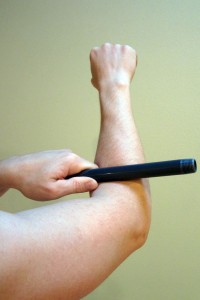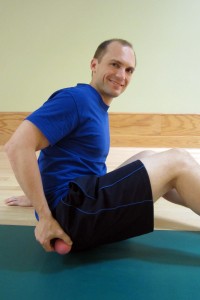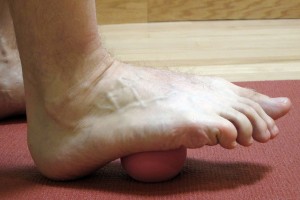Many household items can be used to perform self-myofascial release. Why is self-mobilization and fascial release so important? Mobilization has effects on the musculoskeletal system, the vascular system, and the fascial system. Having good mobility (free of adhesions) can positively improve performance or recovery, and it’s important in maintaining a healthy body. With common household items, you can manage muscle spasms and cramping as well as those painful areas due to training (or more commonly, poor posture and sitting).
Muscle spasms and cramps can be terribly painful. They tend to occur at the most inopportune time and place. In a pinch, many household items can be used to assist in eliminating muscle spasms, cramps, tightness, and pain. When available, my first choice is almost always the foam roller. It is versatile and can be used to mobilize tissue as well as boney articulations. The foam roller also works great to increase spinal extension mobility. For more information on foam rolling, please refer to Foam Rolling for Rehabilitation and 5 Ways to Improve Range-of-Motion (ROM).
My Top 3 Household Items for Self-Mobilization:
1. PVC Pipe – This works great for sore forearms (including “tennis elbow”) as well as tight hamstrings or shin splints. You can use one hand or both to press or rub the PVC pipe over sore or tender areas. The amount of pressure shouldn’t be painful. Avoid pressing on especially boney areas.
2. Tennis Ball* – This is perfect to pinpoint those hard to reach places on the back or in the buttock region. Hold pressure over the sore area or spasming muscle until the spasm releases. This could take a couple of minutes depending on the severity of the spasm. (*A tennis ball may be substituted with another firmer and smaller rubber ball as shown below.)
3. Racquetball – This is perfect for self-foot mobilization or if you need to provide more pressure using a firmer ball. If you suffer from plantar fasciitis or poor mobility in your feet, I highly recommend performing this daily for a couple of minutes on each foot. Be sure to work the entire foot, not just the arch.
Muscle spasms, cramps, tightness, and muscle soreness are often quite painful! These three common household items can be used to help mobilize, minimize, and/or eliminate muscle pain. For more helpful ideas, please refer to Muscle Cramping & Spasms – Treatment Options, in which I discuss specific treatment options for managing pain including: massage, self-mobilization tools, topical agents, and supplements.
What are your top household items for dealing with muscle cramping and spasms? Please post your comments below as we could all use a few more tricks to eliminate pain!
If you have a question that you would like featured in an upcoming blog post, please comment below or submit your question to contact@thePhysicalTherapyAdvisor.com. Be sure to join our growing community on Facebook by liking The Physical Therapy Advisor!



